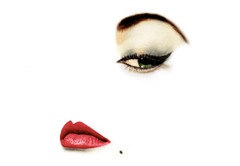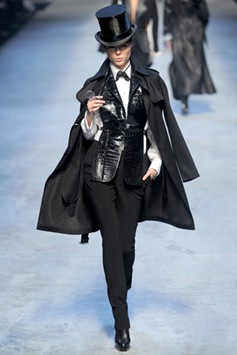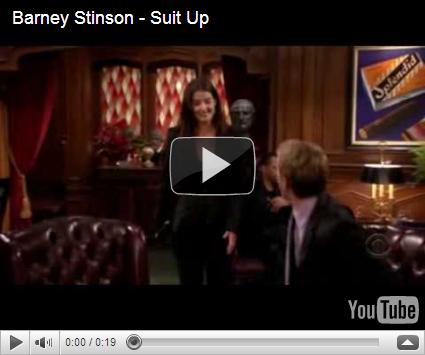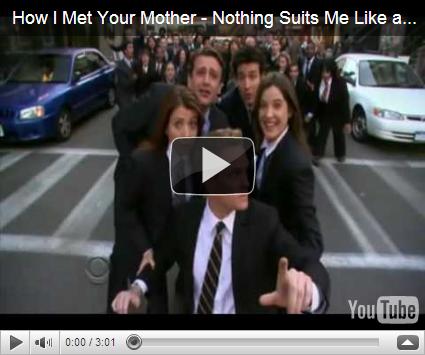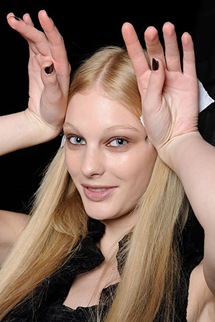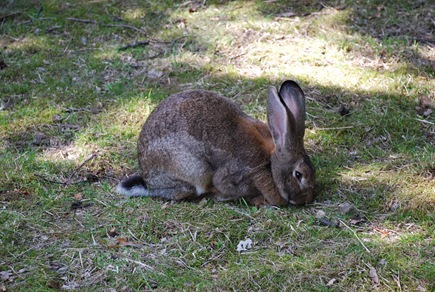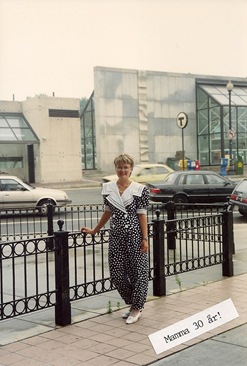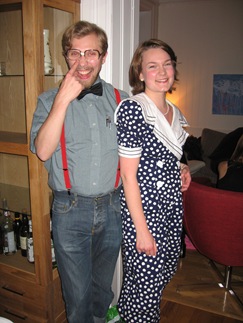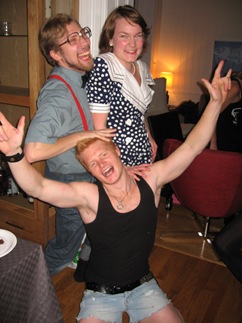November 2, 2010
Gjesteblogg: Investering i estetisk kapital, forsøk 2
Bloggposten er skrevet av Geir Stene, eller @gstene, som vanligvis blogger på sin egen blogg. Den er et svar på posten om hvor mye tid jeg bruker på mitt utseende, eller hvor mye jeg investerer i "estetisk kapital".
Da Julie kom opp med ideen om å måle sin investering i ”estetisk kapital”, sånn i tidsbruk, tenkte jeg at det var egentlig morsomt. For hvor lang tid bruker jeg? Ikke særlig mye, tror jeg. Har ikke inntrykk av at jeg driver med så mye slikt. På den annen side, vi gjør så mye mer eller mindre ubevisst at det er neimen ikke lett å si. Derfor syntes jeg ideen var morsom, og jeg kom til å si at jammen skal jeg også gjøre det.
Uka har vært underlig. Sjelden har jeg tenkt så mye over hva jeg driver med av forfengelighetsgrunner, samtidig som jeg ikke ville gjøre mer enn hva jeg faktisk gjør ellers, bare fordi nå fokuserte jeg på hver eneste handling. Jeg har virkelig forsøkt å ikke å gjøre mer, eller mindre, enn det jeg vanligvis ville gjort i løpet av en vanlig gjennomsnittsuke.
Etter å ha plottet tallene inn (fra notat via iPhonen) i Excel er tallet mitt: 28.
Jeg brukte altså 28 min. i snitt gjennom de 7 dagene. Det er min ”estetiske kapital” eller forfengelighetstidsbruk om du vil.
MANDAG
Dagen startet fort, rask dusj, på med klær, tannpuss og godlukt – og ut av døra, sånn forfengelighetsmessig altså. Om ettermiddagen måtte jeg hente de fryktelig dyre italienske skoa jeg kjøpte for over ti år siden hos skoreparatøren, det tok sin tid, fra jobb og tilbake til ruta på vei hjem. Tenkte også over at siden jeg har hatt skoa så lenge og kan ha dem lenge ennå, er det egentlig billige sko. Regnet altså reisetiden på omveien og tiden i butikken. Aftershave, kjøpte jeg på under tre minutter i forbifarten. Armani Kode for de innvidde. Greit når man vet hva man skal ha, sier nå jeg. Kvelden bestod i tannpuss og kattevask. Sånn er det å være mann. 58 min. i alt.
TIRSDAG
Uvant med stoppeklokke for å måle forfengelighet gitt. Men har man sagt A til Julie, så har man sagt A. Litt for sent oppe, tidligmøte på jobb, her gjelder det å snu seg. Lyndusj, tannpuss, godlukt og klær, uvisst i hvilken rekkefølge. Men jeg rakk bussen. Kvelden, sliten etter lang dag, forfengeligheten redusert til minimum. Kattevask og tannpuss. Mulig jeg alt er definert som Alphamann. 11 min.
ONSDAG
Måtte like tidlig av gårde, men var oppe et nanosekund før. Dusjen ble hakket lengre, ellers samme regla. Måtte tre i ny skosnor, kledd skal man da være! Onsdagen ble talt opp til hele 15 min.
TORSDAG
Begynner å bli skikkelig kjedelig dette, Stort sett samme regle torsdagen også, men dusjet i tilegg om kvelden, derfor kunne jeg glede meg over en ”estetisk kapital” for dagen på hele 20min.
FREDAG
Jada, ikke noe ekstravagant morgen dette heller, men barberte meg med ”tredagers” maskinen min. Det er grenser for hvor vilt det skal få vokse i ansiktet, men tid til skikkelig barbering hadde jeg altså ikke. Jeg kunne m.a.o tikke inn 20 min. fredagkvelden.
LØRDAG
Mye bedre tid i helgen. Denne dagen hadde jeg lovet meg bort til en heldagstur på IKEA, det regner IKKE jeg som forfengelighet, spesielt siden jeg ikke skulle ha noe. Vel hjemme kunne jeg kose meg med å endelig få gjort noe med håret. Frisørsalong? Langt i fra; maskinklipperen gjør frisyren som jeg vil ha den – Kort! Og kort ble det. God lang dusj og resten av kvelden med mat, vin og hygge hjemme. iPhone summeres opp til hele 44 min. forfengelighet på gstene.
SØNDAG
Sent oppe, doven dag, kaffe og frokost sånn etter hvert. Litt rengjøring og rydding, litt jobbing og så en dusj utpå dagen. Har egentlig aldri tenkt på at det å klippe neglene er forfengelig, men skal man få med alt, så skal man få med alt. Legger til tannpuss tid for senere i kveld og kan da oppsummere søndagen med personlig estetikkforbruk på 29. min.
Hva lærte jeg? Vel, at sammenlignet med Julie, slipper jeg unna mange ”oppgaver”. Samtidig ble jeg overrasket at når noe skal gjøres, utover det helt obligatoriske, så tar det egentlig en hel del tid. Men nå kan vel jeg ikke karakteriseres som verken spradebass, eller en skikkelig metroseksuell- urban - herremann heller. Om jeg er helt over på skalaen Alphamann, får andre vurdere. Artig var forsøket og nå har jeg også sagt B til Julie, som lovet.
Posted by Julie at 10:20 AM | TrackBack
October 25, 2010
Investering i estetisk kapital
69 minutter om dagen, en drøy time altså, bruker jeg på mitt eget utseende.
Jeg kom frem til dette etter at Mari Mikkelsens masteroppgave Fordi jeg fortjener det ble tema for artikkel i D2 og kommentar i E24. Elin Ørjasæter skrev: "Hver manikyr, hver morgensminke og hver shoppingrunde tar tid. Den tiden kunne kvinner brukt til å løse differensialligninger, gå på pub med kolleger eller til å lære seg et nytt fremmedspråk. Er det rart kvinner ikke gjør karriere?" Mari Mikkelsen lanserte ideen om at tiden vi bruker på utseende er investering i vår estetiske kapital.
Jeg reagerte som den selvopptatte nerden jeg er.I en uke tok jeg tiden hver gang jeg pusset tenner, planla antrekk, (vindus)shoppet klær eller sko, sminket meg, klippet meg eller fønet håret. Og innimellom leste jeg Mikkelsens oppgave. Jeg leste om "the attractive woman identity" som det er vanskelig å legge fra seg, og hvordan estetisk kapital byttes i alt fra innflytelse over venners smak til rabatter fra fremmede.
Det er forsket såpass lite på dette, at jeg ikke vet hvordan jeg ligger an i forhold til andre jenter. Jeg kan imidlertid konkludere med at jeg brukte fra 33 til 110 minutter om dagen, i en tilfeldig valgt uke, på mitt eget utseende. Den uken var jeg hos frisøren, jeg kjøpte sko og jeg dro ut på byen to ganger. Jeg snakket om utseende med både gutter og jenter.
Men jeg brukte 0 minutter på å bekymre meg for hvordan jeg så ut. Jeg tenkte aldri "Nå føler jeg meg stygg." Utseendet mitt var aldri et problem.
Det er en scene i masteroppgaven som omhandler hvor komplisert det er å velge strømpebukser. Hvor undertrykket jenter er som bruker tankekraft, tid og penger på et ubehagelig klesplagg som kanskje vil gjøre at vi ser tynnere ut i festkjole, men som revner første kvelden:
"Med strømpebukser får man jevnere farge på bena, de skjuler merker og de holder figuren "på plass". (...) Jeg gleder meg til å ta den av, før jeg i det hele tatt har fått den på."
Jeg kjenner meg ikke igjen, og jeg tror denne scenen skildrer nervøse jenters jakt på anerkjennelse, ikke strømpebukser. Usikre mennesker finner alltids noe å bekymre seg for. Dessverre. Blir du lei deg av å kjøpe strømpebukser, sitter sannsynligvis problemet i ditt hode.
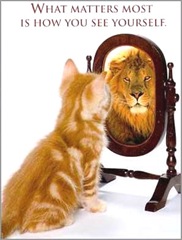 (Her oppdaget jeg at kunne ha skrevet et helt innlegg om strømper og strømpebukser, men det får være grenser for hva jeg skal utsette leserne mine for.)
(Her oppdaget jeg at kunne ha skrevet et helt innlegg om strømper og strømpebukser, men det får være grenser for hva jeg skal utsette leserne mine for.)
Media rettet mot jenter er stort sett basert på å skape usikkerhet som gjør at vi lettere faller for reklame fra kosmetikk- og motebransjen. Men jeg vil nå hevde at jeg fortsatt har fri vilje.
Jeg er lei av å bli fortalt at jeg må bruke mer penger på utseendet mitt for å i det hele tatt se akseptabel ut. Men jeg er vel så lei av å bli fortalt at jeg er usikker, uselvstendig, jålete og ikke minst undertrykket fordi jeg bryr meg om klær.
Les også:
For beskrivelsen av uken, les videre.
MANDAG: 110 minutter
Jeg står opp supertidlig for å være på E24-desken kl. 07.00. I teorien ruller jeg bare rett ut av sengen, tar en brødskive i hånden og spurter mot sentrum. Men i virkeligheten dreier nesten hele halvtimen - fra siste snooze på vekkerklokken og til jeg går ut døren - om mitt eget utseende. Fra første klare tanke ("Har jeg en hårspenne et sted?") via påkledning og sminke, og til jeg tar på meg støvletter.
Etter jobb går jeg rett til frisøren ("Han andre deskeren trenger ikke klippe seg," påpeker Elin.). Der bruker jeg en time og mange hundre kroner utelukkende på håret mitt. Og etterpå vindusshopper jeg sko. Jeg er i skobutikken fordi jeg faktisk trenger gummistøvler, men grunnen til at jeg forlater butikkene tomhendt er at ingen av støvlene jeg fant var fine nok. Jeg vet at det er idiotisk.
På vei hjem lurer jeg på om jeg må legge inn sekundene jeg bruker på å gå bittelitt langsommere forbi en pen kåpe hos Karen Millen.
Heldigvis skal jeg ikke på treningsstudio for å bygge muskler eller bli tynnere. Kveldens trening er West Coast Swing, som riktig nok ser pent ut, men som jeg nekter å legge inn på utseendekvoten. Skifting og dusjing derimot... Jeg bruker omtrent to minutter på å legge frem klær til neste dag, før jeg legger meg.
TIRSDAG: 110 minutter
Det føles veldig offentlig forfengelig å sminke seg på bussen. Men en ordentlig jålete jente ville tatt en senere buss, sminket seg hjemme og kommet meget sent til jobb. På den annen side, hadde jeg ikke sminket meg i det hele tatt, kunne jeg brukt bussturen på The Economist, Dagens Næringsliv eller Sherlock Holmes (på Kindle), som alle ligger ulest i vesken sammen med foundation, mascara og speil. Det var vel nøyaktig det Elin mente.
Jakten på gummistøvler fortsetter, nå med ønsket resultat. 15 minutter og 699 kroner senere, virker ikke neste regnværsdag som verdens undergang. Jeg velger bort modellen til 999,- "Nå var du fornuftig," sier hun i butikken med et smil, og Grensen Sko får plusspoeng for hyggelige og ikke-pushy selgere.
Teller blogging om dresser som utseende-tid? Det handler strengt tatt mer om at jeg tenker på andres utseende. Men siden det er Suit Up Day i morgen, og jeg skal rett fra jobb til fest, tar dusjing + legge frem antrekk og smykker til i morgen ekstra lang tid.
ONSDAG 53 minutter
Tid jeg bruker på å takke for kompliment på eget antrekk - er det tid brukt på utseende, eller henter jeg da bare ut noe av det jeg investerte da jeg la frem antrekket i går kveld?
Mellom jobb og Girl Geek Dinner besøker jeg en venninne. Hun skal farge håret, noe vi bruker 25 minutter på. Det er tid brukt på hennes utseende, men det er også tid vi ellers kunne brukt på å snakke om musikk, litteratur eller teknologi (det vi vanligvis snakker om når vi møtes), så jeg tar tiden. Jeg lærer at det å farge noens hår brunt føles omtrent som å dynke hodet deres med sjokolade. Etterpå bestemmer jeg hvilket antrekk og hvilke smykker hun skal gå med den kvelden, noe som ifølge oppgaven tyder på at jeg har høy estetisk kapital.
TORSDAG 33 minutter
Jeg begynner å bli lei av å se på klokken hver gang jeg tar en t-skjorte ut av skapet eller pusser tenner. Tenker jeg mer på utseende denne uken enn ellers? Det er vanskelig å si. I dag går jeg med "Proud to be a girl geek"-t-skjorten jeg fikk kvelden før. Går jeg glipp av "viktigere" samtaler fordi noen kommenterer den? Eller det faktum at jeg går mye i skjørt og perleøredobber? Det plager meg i hvert fall ikke.
FREDAG 100 minutter
Ikke uventet bruker jeg tid på utseende før jeg drar ut på fredag kveld. Det som tar lengst tid er å vente på at neglelakken skal tørke. Når jeg sitter stille og hører på musikk, leser noen bloggposter og venter på neglene mine, er det samtidig en behagelig pause mellom jobb og fest.
LØRDAG 43 minutter
Kollektivet har dugnad, etterfulgt av drinker. Det er en selvfølge å dusje mellom skrubbing av baderomsvegger og miksing av gin tonic. Mascara er kanskje ikke så selvfølgelig så lenge jeg bare skal sitte i min egen stue med jenter som har sett meg i pysj og med gårsdagens eyeliner under øynene morgen etter morgen. Men det handler om å sette et skille mellom dugnad og cocktail hour.
Når et par drinker blir til vorspiel før vi skal ut, begynner vi å ligne på Mikkelsens masteroppgaveinformanter: En av mine samboere sminker de andre; alle prøver hverandres vesker; samtalene dreier seg om hår og øyenskygge.
Disse ritualene handler nok mer om å bli kjent med de andre jentene enn om utseende i seg selv. Greit nok, så lenge jeg slipper å snakke om fremmedes sykelige forhold til mat.
SØNDAG 35 minutter
Min eneste plan for dagen er å gå fra Frogner til Sagene for å sitte på min gamle stamcafé og lese. Alene. Men antrekket og sminken er fortsatt gjennomtenkt. Det er en selvfølge. Franskmenn vil si at jeg pynter meg av ren høflighet - til meg selv og verden forøvrig.
Vil du virkelig vite ENDA MER om mine jålete vaner? Da kan du lese om hvordan jeg shopper.
Posted by Julie at 4:59 PM | Comments (2) | TrackBack
October 13, 2010
Suit up!
To quote Barney Stinson: "Suit's are awesome."
Wednesday October 13th is International Suit Up Day, celebrating the show How I met your mother, the character Barney Stinson, and the outfit The Suit.
Although I'm generally sceptical of any "it's so unfair that women can't do this" whining, I agree with this Norwegian blogger about the following:
"The man's suit is a genius concept. It does men many favors and simplifies their lives. (...) While there are ugly and unfashionable suits, it's a fact that all men can look f*cking good in a suit. Men are more manly, more male in suits (...) Long-sleeved shirts, a blazer and trousers hide bad skin, scars, sweat, hair, fat and any other body issues. Suits turn boys into men, while still flattering older men." (My translation)
I recommend the whole post if you read Norwegian. In summary: Men have this go-to outfit that says "I'm professional and serious, and it's totally a coincidence that I look hot at the same time." Women simply don't have an equivalent.
What do we wear when men wear suits? Sure, we can wear suits, and look cool:
... but it will be inevitably be described as "women wearing menswear", possibly because it's "trendy" (Note to fashion journalists: It's not a trend if it's been around for a century.).
Or we can wear fitted dresses, recommended by the Financial Times... but they can easily cross the line into too dressy or too fitted.
Women often end up looking like they either put too much effort into their appearance, or not enough. Pencil skirts and heels are more secretary than boss, while an actual suit can end up looking like a costume.
But hey, Suit Up Day is not about complaining. In a world according to Julie, it would be about all the men I meet wearing suits for just one day. That would be great...
In the meantime, I can put on a blazer and watch How I met your mother. Videos below...
How to suit up:
Barney Stinson's best catchphrase:
And of course, the suit song:
Posted by Julie at 12:05 AM | TrackBack
October 11, 2010
Utseendet - bortkastet tid eller investering?
Hver manikyr, hver morgensminke og hver shoppingrunde tar tid. Den tiden kunne kvinner brukt til å løse differensialligninger, gå på pub med kolleger eller til å lære seg et nytt fremmedspråk. Er det rart kvinner ikke gjør karriere? - Elin Ørjasæter i E24
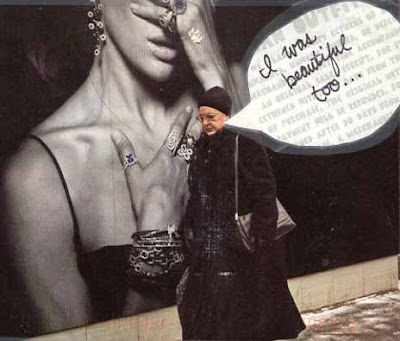 Det forskes nesten ikke på hvor mye tid jenter bruker på utseendet sitt. I 2000 fant SSB ut at unge menn (16-24 år) brukte 38 minutter på "personlig hygiene, av- og påkledning" hver dag, mens kvinner brukte 55 minutter.
Det forskes nesten ikke på hvor mye tid jenter bruker på utseendet sitt. I 2000 fant SSB ut at unge menn (16-24 år) brukte 38 minutter på "personlig hygiene, av- og påkledning" hver dag, mens kvinner brukte 55 minutter.
Nå har Mari Mikkelsen skrevet oppgaven Fordi jeg fortjener det om unge jenter i Oslo og ressursene de legger i utseendet sitt. Hun bruker begrepet estetisk kapital og omtaler dermed utseendet som noe kvinner investerer i, fremfor å bare bruke opp tid på.
Siden jeg er selvopptatt, ble jeg nysgjerrig på hvor mye tid jeg egentlig legger i utseendet mitt. Og siden jeg er nerdete, fikk jeg lyst til å faktisk sette tall på det. Det skal visst være flaut å fortelle om dette (og derfor underrapporteres det), men jeg bør i hvert fall notere det for meg selv. Mulig det er komplett uinteressant for bloggens lesere, men som sagt, jeg er en selvopptatt (og kanskje litt forfengelig) nerd.
Hypotese: Jeg tror jeg er over, ok da, godt over, SSBs gjennomsnitt når det gjelder tidsbruk.
(... men jeg stusser litt over at "avkledning" er et punkt. Hvor lang tid det tar, avhenger vel mest av hvorvidt man har en tilskuer....)
Alle bloggpostene mine om klær og mote og sånn er samlet her.
Illustrasjon: PostSecret
Oppdatert: Siden det er minst 1 leser som venter i spenning på dette regnestykket, kommer jeg til å publisere tallene.
Oppdatert igjen: Eksperimentet er avsluttet. Les om resultatet.
Posted by Julie at 6:18 PM | TrackBack
August 19, 2010
It's (almost) Moose Cap Friday!
Tomorrow is Moose Cap Friday!
In the photo on the right, runway model Patricia van der Vliet demonstrates the Sacred Moose Cap Greeting behind the scenes at the Anna Sui Fall Ready-to-Wear show 2010. I see this as proof that Moose Cap is now high fashion.
From Vogue to my own little magazine: The latest issue of argument, where I've been an editor for the past year, was released just a few days ago. And there is a girl with Moose antlers on the cover.
Believe it or not, this was not my decision. Our cover illustration is artwork by Linda Soh Trengereid. You can see more of her Moose Cap art here.
But what is Moose Cap? It is a sacred tradition that began in the 1200s in the woods of Rondane. Or in the Oslo pub Café Sara one summer night back in 2008. Since then, every third Friday of the month is Moose Cap Friday.
In this interview my friends and I explain Moose Cap to the magazine The Monthly Moose. They have no affiliation with Moose Cap Friday, but since the name was so similar, they decided they needed to do a story about us.
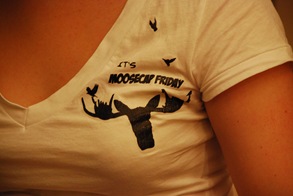 We celebrate with Moose Cap food (Moose meat obviously, but also Moose-shaped pasta), Moose Cap t-shirts (tm), politically incorrect jokes, and well, parties. And somehow, thanks to Moose Cap Magic even the founders of this tradition do not always understand, strange and exciting things tend to happen on Moose Cap Fridays.
We celebrate with Moose Cap food (Moose meat obviously, but also Moose-shaped pasta), Moose Cap t-shirts (tm), politically incorrect jokes, and well, parties. And somehow, thanks to Moose Cap Magic even the founders of this tradition do not always understand, strange and exciting things tend to happen on Moose Cap Fridays.
Although wearing a t-shirt or Moose Cap is strongly encouraged, the most important thing is to honor the Moose, honor your friends and celebrate.
Oh, and you should join the Facebook group of course.
P. S. Moose Cap Magic means you will never be hungover the day after Moose Cap Friday. Seriously. Enjoy.
Posted by Julie at 9:27 PM | Comments (1) | TrackBack
May 19, 2010
Fashion lessons from childhood fiction
- Don’t be afraid of super high shoes. (Cruella de Vil)
- It’s not enough just to be pretty. (Jane Eyre)
- Well-tailored jackets and tiny Victorian-style boots go with everything. (Mary Poppins)
- There’s no shame in being different, bright jackets are awesome and you really need to stop judging people entirely by their clothing, even though judging people entirely by their clothing leads to completely accurate assumptions. Actually, every single item in your closet would look better surrounded by Parisian scenery... and judging people by their clothing is more accepted in Paris. (Madeline)
Via Jennifer Wright's series Fashion lessons from childhood fiction
Oh, and by the way, some related posts:
- Playing dress-up (how wanting to be a witch influenced my style)
- Dressed for anything (why Parisians judge)
- Style according to Julie (All my posts on clothes and fashion on one page)
(And yes, this was written as procrastination/break in the middle of writing a six page feature article on South African education. Yay, feature writing exams again!)
Posted by Julie at 9:55 PM | Comments (2) | TrackBack
March 18, 2010
What's your tribe?
Exactitudes is fascinating. Ari Versluis and Ellie Uyttenbroek have taken on-the-street style photography a step further by collecting photos of people who dress alike. They've given each photo collection, or tribe, a name. And Norwegian D2 asks in this article's title: "What tribe do you belong to?"
In 1999, I looked kind of like these girls. My braces had just come off, but I had the pony-tail and the dark, fitted, denim jacket. In early 2008, I was a girl living in the seventh - literally a member of the filles du septieme tribe. I guess I did look like these girls - on a bad day. That came out kind of harsh. What I mean is, if two Dutch photographers had stopped me on the street while I was wearing jeans, an open cardigan, a plain top and minimal accessories and make-up, it would be the result of an early-morning class rather than a conscious style choice or an attempt to look like I have "the style of a tabloid actress". In late 2008, early 2009, I guess I kind of looked like these girls,only less Asian and with a cheaper bag. And now I don't know.
Which one are you?
(Parts of this is reposted from December 2008, but I rediscovered Exactitudes the other day, realized they had a new website and that I needed to update my links, and then spent a little too much time looking around at the tribes.It's even more fun now that they've added audio commentary.)
Posted by Julie at 1:50 AM | TrackBack
January 26, 2010
Fur issues, part 3: Organic, fair-trade, free range coats
I'm surprised the Norwegian fur industry hasn't gotten its act together by now.
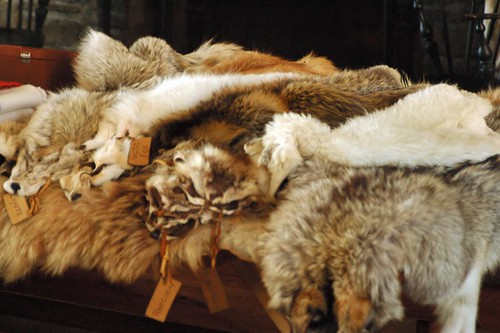
Let's examine the evidence:
1. Norway is a rich country, but Norwegians claim to be down to earth and sensible. So Norwegians love politically correct, expensive status symbols.
2. A Norwegian writer recently used this country's winter weather as evidence that God's world-creating talent is grossly overrated. You would think we were willing to buy anything that could keep us warm.
3. Free range meat, eggs and dairy are sold in many Norwegian supermarkets. This indicates that plenty of Norwegians care about animal rights, but are still ok with killing animals so human beings can be happier.
4. Vegan footwear exists. Marketing fashion as politically correct seems to work.
5. I count Norwegian tap water among my favorite drinks. I miss it when I'm outside the country. But selling Norwegian bottled water to people in Norway who own sinks, turned out to be a successful business plan. We will clearly pay money for anything.
In all seriousness, why does the fur industry not attempt to capitalize on the consumer demand for "ethical" luxury?
After a dissapointing fall season for the fur industry, the unusually cold winter has driven Norwegian fur sales up, leading to more debate about animal cruelty. In this VG article, a spokesperson for Pelsinform says fur farmers who mistreat their animals are a far greater threat to the industry than animal rights activists or fur boycotts are. I think that's true.
As I've tried to explain before, killing animals for fur isn't basicly any worse than killing them for meat. But if the fur industry really is crueller than the meat industry, then of course they shouldn't be allowed to get away with it.
My advice: Make sure the animals are treated well until they die as peacefully and painlessly as possible. And then make sure consumers know about that.
This is Part 3, in which I give the fur industry some marketing advice. You should also read
- Part 1, in which an ethical dilemma turns up literally on my doorstep, in the form of a white rabbit fur vest
- Part 2, in which I make a more serious attempt to discuss fashion as if it were a topic in ethics class.
Photo: .jowo. CreativeCommons
Posted by Julie at 1:08 PM | TrackBack
January 24, 2010
Fur issues part 2: Attempting to make sense
A response to comments on:
- Part 1, in which an ethical dilemma turns up literally on my doorstep, in the form of a white rabbit fur vest.
Eva writes that last week's post about fur didn't address the issue of animal cruelty in the fur industry enough. I actually barely addressed it at all.
That fur is wrong because it hurts animals is the foundation for the whole fur debate. It's the basic assumption underlying all the confusion in my head (which Martine called "witty" in her comment).
 However there is the difference between "Fur is wrong because animals die" and "Fur is wrong because the fur industry mistreats animals and then they die".
However there is the difference between "Fur is wrong because animals die" and "Fur is wrong because the fur industry mistreats animals and then they die".
The first sentence makes logical sense, but I disagree with it. I happen to think that killing animals for food is ok. (I had a tuna sandwich today.) So I have to think that killing animals for clothing is ok. (I wore leather boots while I ate the sandwich.)
The second sentence does not make sense. Animal cruelty is wrong. Fur in itself is not automatically wrong because of this.
I don't know that much about the issue of animal cruelty in the fur industry. Also (and this is actually the important part): I don't know that much about animal cruelty in the meat/fish/egg/dairy industries either, not to mention all the other industries I support each day. And that's why I've worn fur a handful of times. Because being anti-fur would be hypocritical. It would mean arbitrarily "boycotting" something that I have never bought anyway, while continuing to support industries that may or may not be just as bad.
 My conclusion in part 1 was that, given that fur is one of the many reasons human beings kills other species, and given my insufficient knowledge of the amount of harm I was inflicting on other living creatures, to be against fur I should also be against meat, fish and leather (definitely, because animals have to die for me to have this), plus silk, eggs, dairy and probably a lot of fruits and vegetables (probably, because animals are very likely to die so that I can have these things). And I don't want to be naked and hungry.
My conclusion in part 1 was that, given that fur is one of the many reasons human beings kills other species, and given my insufficient knowledge of the amount of harm I was inflicting on other living creatures, to be against fur I should also be against meat, fish and leather (definitely, because animals have to die for me to have this), plus silk, eggs, dairy and probably a lot of fruits and vegetables (probably, because animals are very likely to die so that I can have these things). And I don't want to be naked and hungry.
I'm not saying "I simply don't want to care about animals." I'm saying that as long as I'm not a vegan, I have no reason to be against fur in itself. It would be like saying "Minks deserve to live, but fish don't."
Being ok with fur doesn't mean I can't be against specific animal cruelty. And yes, the idea that the fur industry does a lot of cruel things is one of the reasons I have never particularly wanted fur. In part one, I wrote: "I had never seriously considered buying a fur coat in the same way I've never seriously considered buying a pair of Prada pumps or a Burberry trench coat: I don't have that kind of money." However, I have wanted Prada pumps and a Burberry trench coat.
Full disclosure: I have never bought any real fur. I have worn (daily for two seasons) a coat with a fur collar, which my grandmother had worn decades earlier. The collar was supposedly wolf, but I honestly don't know. That coat had a rabbit fur lining, which I removed and never wore. I have also borrowed mink scarves and collars for specific occasions, including a costume party, from family members. The other women in my family wear fur. I was given a rabbit fur vest, which I returned after wearing twice.
Related links:
- Here's a video (Norwegian news clip) about cruelty to chickens. (Norwegian)
- My journalism classmate Jorunn Gaarder wrote a very balanced feature article about the fur debate. It was adapted into a news story and published in the Norwegian newspaper VG, but not online. If you have access to the archive Atekst, you can read the VG article here. (Norwegian)
- Anne Viken, a Norwegian free-lance journalist and veterinarian, has written articles about marketing products as "ethical" and what's really behind labels like "local food" and "organic food". Here's one of them. There are more articles about food on her blog. (Norwegian)
- IFTF is the international organization for fur trade, both farmed and wild fur. Pelsinform is the Norwegian equivalent.
This is Part 2, in which I make a more serious attempt to discuss fashion as if it were a topic in ethics class. Continue to:
- Part 3, in which I give the fur industry some marketing advice.
(Images by The Sartorialist)
Posted by Julie at 6:57 PM | TrackBack
January 18, 2010
Fur issues
I've been thinking about fur lately. It's one of those trains of thought that simply will not go away, as if my mind were saying: "Write this down! Sort this out! Get to the bottom of this!" over and over and over. Especially after my mom showed up at my door with a rabbit fur vest for me.
Rabbit. My mother informed me yesterday that "We don't eat rabbit," because we used to have a live one. But that didn't stop her from buying rabbit fur the week before. And when she gave it to me, we had the following conversation:
"What's this, Mom?"
"It's rabbit."
"It's RABBIT!?"
"It's rabbit!!! :-)" (Yes, you could hear the smiley at the end of her spoken sentence.)
"But Mom, it's rabbit."
"Well, just tell people it's mink."
Now, with a few notable exceptions, I usually think my mom has good taste and style. Plus, the vest fits, it's warm, and I recently added "It's cold outside," to my list of all-purpose excuses. (The list also includes "At least I don't smoke." and "I was living in Lier when I did that.") But since I'm a nerd who sees over-analyzing as a hobby, my brain won't stop internally debating how to feel about this recent addition to my closet. So far, I have come to the following conclusions:
1. Wearing fur sends a message. It says: "I'm ok with the fact that what I am wearing used to be alive." But so does wearing leather and silk.
2. In many cases, fur also sends the message: "I spent A LOT of money on something that makes me look box-shaped." (This vest doesn't; the opossum coat my mom tried to make me borrow, does.)
3. Fur is expensive. So is foie gras, another luxury item associated with animal cruelty. "Sacrificing" the things you can't actually afford, is not sacrificing. I'm not going to earn any karma points by pretending that I don't have a car because of the environment. I don't have a car, because I don't need one and I can't afford one. I rarely eat fois gras, because I can only rarely afford it. I had never seriously considered buying a fur coat in the same way I've never seriously considered buying a pair of Prada pumps or a Burberry trench coat: I don't have that kind of money.
 4. I've heard people argue that wearing fur, even vintage fur from the 30s, is an indirect support of today's fur industry, because it keeps the look of fur in fashion. These same people suggested wearing realistic-looking faux fur. How does that not keep the fur look in fashion? People who claim to have made up their minds are clearly just as confused as me. "Don't get me started on fur. It makes me so angry," one friend warned when I mentioned my difficult gift. I glanced at her new suede coat and changed the subject.
4. I've heard people argue that wearing fur, even vintage fur from the 30s, is an indirect support of today's fur industry, because it keeps the look of fur in fashion. These same people suggested wearing realistic-looking faux fur. How does that not keep the fur look in fashion? People who claim to have made up their minds are clearly just as confused as me. "Don't get me started on fur. It makes me so angry," one friend warned when I mentioned my difficult gift. I glanced at her new suede coat and changed the subject.
5. Faux fur is not as warm. And it either looks nothing like fur or exactly like fur, and I think either one is screapy*. It is simply not an alternative in my opinion.
6. I've worn fur before (right), so I fail already.
7. Ideally, I would know the costs I inflict on the world whenever I choose to consume anything. How happy was the hen who laid these eggs? Exactly how did this turkey die? What are the working conditions of the people who made this cheap t-shirt? Was this imported fruit transported in the best way possible for the environment? Given that I don't know these answers, I am probably making the wrong decisions all the time, leading to uneccessary suffering. Who says that dying to become a fur vest is worse than dying to become Christmas dinner?
After reviewing this evidence, it seemed I had two choices, if I wanted my own actions to make sense. I could wear the fur. Or I could give up a whole bunch of my favorite things: all my boots, my preferred breakfast, my kimono, the only pyjamas I really like, traditional Thanksgiving - did I mention bacon?
So I wore it just long enough to realize a drawback I had forgotten: Rabbits shed their hair. So did my new vest. I will be returning it.
* Screapy: From scary and creepy. Something so stupid and off-putting that it kind of scares you. It's in Urban Dictionary now, but I made it up before I started this blog. I should mention that I was living in Lier at the time.
This is Part 1, in which an ethical dilemma turns up literally on my doorstep, in the form of a white rabbit fur vest. Continue to:
- Part 2, in which I make a more serious attempt to discuss fashion as if it were a topic in ethics class.
- Part 3, in which I give the fur industry some marketing advice.
Posted by Julie at 11:52 PM | Comments (8) | TrackBack
November 28, 2009
This post is not about pants
For a couple of years, I was in a drama group where we all wore black to class. The idea was that we would be in uniform, and that if we put on gloves and masks, we could be invisible on stage. This was back in the late nineties, during the last BSE (Bare-Stomach-Era). Long sweaters and high-waisted pants were impossible to find, and our strict drama teacher was always yelling at us to cover our stomachs because we were going to distract the audience. I was so ridiculously short that the cropped sweaters covered me anyway, but the taller girls opted for thick black tights which could be pulled up over their belly-buttons, and then short turtle-necks. This "outfit" was comfortable and worked under costumes, but looked ridiculous. But we were in our early teens; we felt (and probably were) ridiculous-looking at all times anyway.
I was the youngest and smallest in the class, and slightly in awe of the older girls, even when they were dressed like three-year-olds. So I vividly remember the horror we all experienced when one of the girls forgot what she wasn't wearing, and walked out of class and down to the public library - in just her tights! She came back mortified, telling her horrific tale of wondering why everyone was staring, and then realizing that she wasn't wearing pants! She was essentially wearing ribbed long underwear with attached feet, the kind with two thick seams in the back (and not in a good way).
Now we know that this girl was actually just starting the no-pants trend, which I am still fighting a decade later. I mean, look at this supposedly "fashion" photo, which I can't remember where I found:
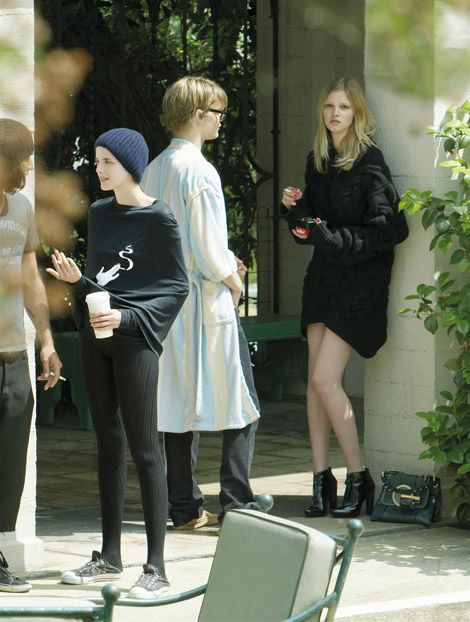
I don't like leggings (or jeggings), but this girl has gone beyond that. She is wearing thick ribbed tights. Perhaps the cape-like thing with the printed cigarette-holding hand is actually her skirt? (The other girl looks awkward too, put I'm willing to call her sweater a dress, so she's ok.)
I found this photo lying around in my unfinished blog post drafts. I probably saved it to use as an illustration for a fashion rant. But my brain is in mushy post-Thanksgiving I-love-and-am-thankful-for-everyone mode, so I can't rant. I'll just share another pants-free memory with you...
I was at a club with some friends, when a girl we didn't know came up to us. To my friend - who happens to be an honest person - she said: "Seriously, how do I look?"
The unknown girl was wearing a T-shirt and black tights, the thin nylon kind. The kind that showed off her polka-dotted underpants to everyone at the club. So my friend said: "Since you ask, you kind of look like you forgot your skirt."
The girl looked extremely offended, and said: "I just wondered if I looked tired or not."
Leggings are not pants. Tights are not leggings. That does not mean that tights are pants.
More "Style according to Julie"
Posted by Julie at 12:00 PM | Comments (1) | TrackBack
November 22, 2009
Blogging and democracy (fashion edition)
I read a number of fashion/style blogs last week*, but I also read about fashion blogging, because that lets me think about journalism and clothes at the same time.
The New York Times wrote about fashion blogging, commenting on what most of us already know (right?): The journalists and editors who were once gate-keepers of clothing knowledge are now commentators sharing the spotlight with independent bloggers, celebrity twitterers and well, everyone else.
But does this mean anything? Because to quote (and translate) Kristian Landsgård in the next issue of argument (available January 14th for Norwegian readers): "We're exchanging one judge of taste and opinion (the newspaper editor) for another (the pro blogger)".
Landsgård is talking about politics, but it's the same with fashion. Maybe even more so. Because when bloggers are scoring front row seats, backstage passes and free designer clothes, it's hard to see the crucial difference between a blogger and a journalist. Sure, these bloggers may be "ordinary people" in the sense that they have no education in fashion or journalism, but that's hardly a reason to love them, is it?
I obviously cheer for bloggers, but let's not exaggerate this revolution.
The real revolution is not in who is doing the writing, but in the possibilities of online publication itself: speed and details. Sure, I can read a journalist's opinion of a new collection or a front row blogger's opinion, but I love that I can go to Style.com and see photos of every outfit right away and make up my own opinion first.
(In fact, I would like more details, more close-up shots of the bags and shoes, and more info on things like fabric choices, since that can be hard to see on photos. Thanks!)
Oh, by the way:
* And then I realized I had hit some kind of all-time low when I sent an e-mail to my dad specifying that he should wear a purple bow-tie this season.
Posted by Julie at 10:49 PM | Comments (2) | TrackBack
November 16, 2009
The polka-dotted jumpsuit
I can't believe I wore this...
... to a party.
This is my mom in 1991. And this is me, in 2009...
It was fun though. Apparently my outfit distracted people from their conversations because it was just so... 80s. So over-the-top, polka-dotted, shoulder-padded and well, a jumpsuit.
To be fair, jumpsuits are back (Why?!?!). And this one is comfortable. And I like polka-dots. In moderation.
However, there was no moderation in the 80s. Which is kind of the only thing I respect about 80s fashion. It was crazy, but at least it wasn't as boring as 90s fashion. The 80s had bad taste, but the 90s had no taste.
Anyway, thank you Cecilie, for the photos. And thank you mom, for lending me the jumpsuit, shoes and pearl necklace - and for letting me wear whatever I wanted back in 1991.
Extra photo, in which I look terrified. Scared of my own outfit:
Posted by Julie at 12:54 PM | Comments (1) | TrackBack
November 11, 2009
Somewhere in the hills of Ireland is a Prada bag
I wanted to add a Youtube clip of the Tori Amos song Ode to my clothes to my post about what clothes I want to hand down to someone in the future. And then I came across a video of an elementary school chorus performing the song.
I love the idea of a school teacher teaching kids the lyrics to a rare Tori track. And then I found out that these kids actually know plenty of Tori songs. Awww...
nobody knows things like my clothes
my telephone-life in the back of my jeans
nobody knows how I feel today
Posted by Julie at 12:33 PM | TrackBack
November 8, 2009
Hand-me-downs
What from your closet will you pass down to your daughter?

This is a dress which I think my grandmother made for herself in the early 60s. I actually don't know the story of this dress, but it was definitely hand-made, and I found it in the attic of my grandparents' house. It's modeled by my little sister here, in my kitchen which is probably as old as the dress. You can just glimpse the hand-me-down coffee cups on top of the espresso machine in the background.
Although the kitchen is due for some updating, I really hope the dress survives the parties I'm taking it to these days, so that I can show it to my daughter/niece/much younger friend sometime in the future. I think it's interesting how this dress just might work for the next generation, while my modern mass-produced clothes can barely stay together for a few seasons.
Given how much I enjoy my red, white and blue vintage dress, I hope some future girl will enjoy some of my favorite stuff. I'm generally careful with my clothes and accessories, so chances are good that someone will be able to wear them - or at least look at them and shake their heads over "2000s fashion" - years from now. I really hope my daughter likes...

... the dress my mom made for me this summer.

... skirts my mom made for me, like this one. I would hand down the top too, but I have almost worn it to death already, so that's not an option.

... my white jean strapless dress from French Connection, which I want to wear all the time these days - and my recipe for cookies.

... my bunad. My favorite outfit of all.

... my t-strap dancing shoes, my pearls, my grandmother's bracelet - and possibly my mother's lacy skirt and mink shawl, although they might get handed down to one of my nieces.

.... my polka-dotted skirt and my white trench coat, if they survive.
I've already saved my Miss Sixty jeans from junior high for this very purpose. Everyone had the same jeans back then, so they really tell the story of being fifteen in Lier in the very early 2000s. I've also saved the grey corduroy jeans I added lace and navy-blue stitching to a couple of years after the Miss Sixty's. I wish I still had my jean jacket with the embroidered butterfly "shoulder tattoo" from early high school, but I left that on a bus stop. I still have my bright pink jean jacket though. And there are white Buffalo platforms in my mom's closet - a fashion crime which must be shown to future generations. If we don't know history, we are doomed to repeat it. For the same reasons, I am saving that polka-dotted jumpsuit my mom wore in 1991. After all, I'm glad she's kept it so far.
Posted by Julie at 3:43 PM | Comments (1) | TrackBack
October 21, 2009
Halloween inspiration
This shouldn't come as a surprise: Halloween was my favorite holiday when I was a kid. I didn't really celebrate last year - huge mistake. This year...
My costume/outfit is a work in progress, but that's the beginning of an idea. Main photo is my sister in her tutu, and that white face is from Marc Jacobs, via Style.com.
Make-up videos from MissChevious below.
Posted by Julie at 12:04 PM | TrackBack
October 13, 2009
Playing dress-up
If I could have a second skin, I'd probably dress up in you. - Belle & Sebastian
"When did you become like this?" My mom asks me. She is referring to a series of photos like the one below, taken by Hanne Melgård Watkins on our hiking (er... walking and wine-drinking) weekend trip.

"Just look at the way you're walking," my mother says, "In your head, you're obviously wearing a skirt and heels. When did you turn into a skirt-and-heels girl?"
She's right about the way I walk. But she should know that I've always been "like this", at least since age three.
I've spent my whole life dressing up in my head. My outfits have always been costumes, even when no one else can see them - like in that photo.
My earliest style choice was that since I was a princess, it would be completely inappropriate for me to wear jeans to day care. I had never seen a princess wearing jeans, and I firmly believed that I should stick with tradition.
 Then my grandmother explained to me that I wasn't a princess, because my parents were not royal.
Then my grandmother explained to me that I wasn't a princess, because my parents were not royal.
This was quite devastating, but after a short identity crisis and a very scary trip to Salem, I realized that I must be a witch.
And if I was going to be a witch, I was going to be Angelica Huston (left) in Witches. I was terrified of her. Not when she turned into the High Witch - that was just a mask, duh! - but when she was undercover evil, like this.
Since black clothing for four-year-olds was hard to find in 1990, my mother helped me dye some of my outfits. And add silver paint. I guess you could say I went through the goth phase early. If I hadn't gotten that out of my system pre-kindergarten, I might look like this every day now:

While I was playing witch, my mother had just miraculously survived the 70s and 80s (she wore a polka-dotted, shoulder-padded jumpsuit). She basically let me wear whatever I wanted in the 90s (including an apron and a veil for, say, grocery shopping), within the limits of my family's student budget and my life style. My life style was supposed to involve sand boxes and finger paint, but I refused to conform. Still, my outfits had to allow for a certain degree of messiness, so my mother insisted on sensible shoes. Here's where I stopped wearing dresses and skirts for a while. The skirts with sneakers look was not OK. I explained this to my mom - and started wearing pants.
My mother sent me to drama class, so I could wear costumes in a more appropriate setting. At age five, the youngest actors were supposed to play monsters. I hesitated - evil was a good role for me, ugly and furry not so much. Since the five-year-olds had a lot of creative control over their own performance, I decided to be the princess of the monsters, meaning I would wear a dress and rule over all the ugly, furry kids.
And so I began my acting career, which I now remember as a series of characters that I got really into. I was the kind of annoying drama class child who stays in character during intermission and all the way home. And the more spectacular the costume, the better. If I was playing a girl from the country, I designed a cowgirl-inspired skirt and vest. Playing the woman who faints when Dr. Jekyll turns into a monster was an excuse to alter an old cocktail dress to fit a little girl, and then add feathers and pearls and heaps of costume jewellery.
My mom's love of sewing, knitting and jewellery-making was fantastic for me. I didn't realize until later that not all the parents could make butterfly wings and dove's wings, let alone understand that there was a difference, and that a little girl needed to have both of these outfits in her wardrobe. Even now, I need to give my mom credit for coming up with most of my theme party outfits, including what will probably be my 2009 Halloween costume (plus she made me a maid of honor dress I love and want to wear all the time).
But I was never a princess for Halloween. I never had a pink phase. I stopped being a princess when I was four and faced the reality of being the daughter of a business school student, not a king.
And years later, when I worked at the ballet supply store LaDanse, my favorite customers were the little girls who specifically asked for black ballet shoes. I think I'm still more drawn to the dark, mysterious villainwear, rather than the pastel princess costumes. But I have accepted that people will insist on seeing me as "sweet" anyway. I don't think I can look provocative in any way if I try.
Helen Gorden writes in The Guardian that "a lot of dressing up takes place inside the head and not in front of the mirror; choosing a new outfit is about the associations it provokes as well as the way it looks." That is so true.
Even at age four, I knew I couldn't pull off evil the way Angelica Huston could. And I'm not going to try now either. But somehow, the idea of dressing up as a witch to go to kindergarten eventually translated into little black dresses and red lipstick - and no desire to be blond or tan.
And even now, sometimes it helps to step out of my apartment knowing that I'm actually an undercover grand high witch.
I love acting. It is so much more real than life. - Oscar Wilde
By the way, more posts about the childhood version of Julie:
- In an alternate universe, I'm American
- You know I can't handle stupidity (about my early vampire days)
- Remembering October 2001
- Books I read too early
Posted by Julie at 9:27 AM | Comments (3) | TrackBack
August 12, 2009
Cheating with Chanel


A few weeks ago, I saw Coco Chanel & Igor Stravinsky at a closed viewing before the official release date. There were glasses of cava and bottles of number 5. The idea was that we would talk the film up before the release. I didn't feel like writing a review. Partly because of vacation mode, partly because... meh.
I went in on a slight cava buzz, expecting to crave Coco's clothes and to love Igor's music. Check. Check. Also, she apparently had a great house. But that was it.
I would warn of spoilers, but spoilers require a plot.
The full extent of the plot is revealed on the movie poster: Coco Chanel and Igor Stravinsky have sex. No, it wasn't porn, but that was really what happened. She is rich and admires his work. He moves into her house with his entire family, including wife, so that he can have a quiet place to compose. In a series of scenes that zoom closely in on their two faces, we get that the two main characters are thinking about each other a lot. One night she goes into his room and takes off her dress. And I think: "No! The clothes are the best part of this movie!"
Not that the whole thing isn't all very pretty. I mean, look at the trailer:
But I would prefer a slide show of Chanel clothes set to a Stravinsky soundtrack. The "plot" only makes the two seem selfish and horrible. His wife is in the next room. So are his children.
After reading Lust in Translation last week, I started thinking about this movie again. The author, Pamela Druckerman, an American living in Paris, went to China, South Africa, Japan and Russia among others to research cheating. According to Druckerman, while the cheated spouse is always hurt, no one is more devastated by infidelity than Americans. The French for example don't cheat any more than the Americans, but if it happens, it's not all that surprising to them. Being cheated on in France doesn't change your world view, or make you question everything your cheating partner has ever done. According to Druckerman, both the Russians and the French are calmer than Americans about the whole issue of lying.
I don't know how I'm "supposed" to react to infidelity, since Lust in Translation doesn't have a chapter on Scandinavia. But Stravinsky's Russian wife calmly, but tragically accepts her fate, and she's the one I sympathise with, at least up to a certain point.
I think the audience is supposed to be on Coco and Igor's side, but I certainly wasn't. The interaction between them doesn't justify the cheating to me. The characters don't seem to be in love or to inspire each others' work or even to like each other all that much.
It's as if the script writers want us to think: If two attractive geniuses spend enough time together, of course they should have an affair. And since the movie is marketed at fans of both the main characters, of course we'll all sympathise with them. Coco is my heroine already, surely she can do no wrong on screen?
Well, my sympathy did swing back to Chanel for a moment when Igor's wife wrote har a letter saying: "I need him more than you do." Maybe that comment hit too close to home for me, too close to the idea that "strong women" can handle anything, so they better not need anything or anyone.
I know that this film is based on a novel which is based on a true story. So it happened, but that doesn't make it believable to me. There is a difference between realistic and believable. But perhaps reality or the novel has an interpretation of events more sympathetic to Chanel and Stravinsky.
Especially Chanel, who as my friend Martine pointed out after the viewing, could be an interesting character to discuss from a feminist point of view: She provides a house for Stravinsky, she is a successful and really sort of bitchy business woman during the story; she initiates the affair. And most importantly to me, she ends it. I wouldn't mind reading this story as a novel where we actually see what's going on inside this woman's head.
In the meantime, listen to this and browse here instead.
Posted by Julie at 11:33 AM | TrackBack
June 19, 2009
Thoughts after a fashion show
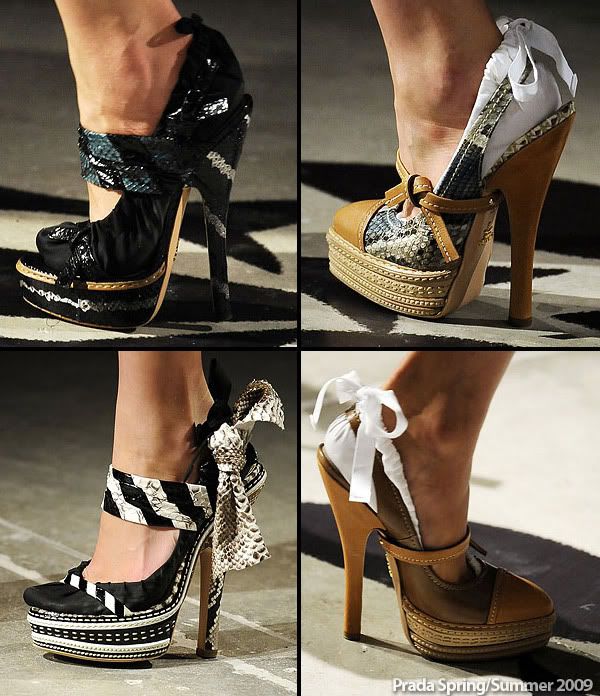 Despite not feeling all that well, I couldn't miss the fashion show from the graduating class of Esmod Oslo on Wednesday. And I'm glad I was there, since my friend Eivind B. Hackett won three awards, including an internship, money and the opportunity to sell his collection at the Oslo department store Steen&Strøm.
Despite not feeling all that well, I couldn't miss the fashion show from the graduating class of Esmod Oslo on Wednesday. And I'm glad I was there, since my friend Eivind B. Hackett won three awards, including an internship, money and the opportunity to sell his collection at the Oslo department store Steen&Strøm.
Slideshow from backstage and the runway
After attending a catwalk show in ballerina flats, I understand why catwalk models need to be tall. And wear incredible platform heels. Because catwalks are not always easy to see, unless you arrive early or have some good reason for being in the front row.
Speaking of heels, people who walk in them should know how. I won't judge the models at this particular show, because I know some of them were friends of the designers, and had never walked a runway before. But if you're a Top Model contestant for example, meaning you want to be a model, shouldn't you know how to put one foot in front of the other, even if those feet are on platform heels? It's just a matter of practicing.

Anyway, judging from my very, very limited experience, fashion shows work the way "exclusive" clubs do: It seems the inconvenience of the whole experience is supposed to add to the feeling of luxury and exclusivity. It's so incredibly cool that there isn't anywhere to sit, or even stand comfortably, and that the music is too loud to allow for any form of communication. You feel lucky if you're actually able to see the show over taller peoples' heads and shoulders. And it's really hot - actually, maybe they really do that on purpose so people will wear less clothing.
But despite all that, I loved it! Especially the fact that Eivind won a bunch of awards, which I've already blogged about in Norwegian.
Shoes from Prada, top photos from Fashionising, where you can also see catwalk models fall.
Posted by Julie at 4:06 PM | TrackBack
Hurra for Eivind!
Eivind B. Hackett vant Gullnålen-prisen, VOICE-prisen og Steen & Strøms Magasinpris på Esmods Diplomvisning på onsdag.
Det betyr at han nå er ferdig med moteskole og har vunnet jobb. Han fikk praktikantplass i ett år av Voice, og 10 000 kr av Steen & Strøm. I tillegg skal hans kolleksjon, "Villainwear", selges på Steen & Strøm.
Se bildeserie fra motevisningen og artikkel skrevet av min klassevenninne og Oslostudenten-kollega Linn Husby.
P.S. En liten gratulasjon til modell Melina også, siden hun er min tidligere kollega på LaDanse og siden hun var over gjennomsnittet flink til å gå med høye hæler.
Posted by Julie at 9:02 AM | TrackBack
May 21, 2009
Wrap boots
 These wrap boots just might be the weirdest footwear I've seen. Probably a tie between these boots (or should I say shoes with stockings?) and my parents' barefoot shoes.
These wrap boots just might be the weirdest footwear I've seen. Probably a tie between these boots (or should I say shoes with stockings?) and my parents' barefoot shoes.
I can't decide if I love them or just think they're weird. I need to try them on!
To add to their weirdness, these are vegan boots. What does that even mean? Vegetarian shoes would not be made from leather (same place meat comes from), so am I to assume that vegan shoes are not made of egg shells or fishskin? I thought we left fishskin shoes behind when WW2 ended, but maybe some disturbing retro trend has started and needs to be stopped by a counter-trend of vegetarian/vegan footwear. Whatever.
These boots are PC in a useful way, too. If I buy a pair, Tom's Shoes will give a pair of shoes (not necessarily vegan wrap* boots) to a child in need. I'm waiting for this kind of charity to show up on Stuff White People Like, but hey, there's nothing wrong with it.
If these shoes work the way I think they do, they could potentially be really comfortable, fit any width of leg and be a light-weight alternative allowing me to comfortably wear boots on sunny spring days. With my luck though, they'll probably fasten with some hideous, itchy contraption and have soles through which I can feel grains of sand.
I need to find out.
P.S. Apparently, we are now taking fashion advices from horses.
* Vegan wrap? Can I get burrito boots instead?
Posted by Julie at 5:39 PM | Comments (1) | TrackBack
May 16, 2009
Men and mysteries
Yesterday I cut my hair short and wore a tie for the first time.
 No, this has nothing to do with writing like a man. And I should point out that I also wore a pink dress and heels. The theme for the Argument release party was gin and ties*.
No, this has nothing to do with writing like a man. And I should point out that I also wore a pink dress and heels. The theme for the Argument release party was gin and ties*.
When I walked in the door, I was greeted by the hostess, also wearing a tie of course, who told me we should form a club for girls who tie their own ties.
And so, the mystery: Why do men act as if getting dressed is difficult for them? Tying a tie is roughly on the same level of difficulty as tying shoelaces. It's not intuitive for most. You have to learn the method. But once you know that, you're set. There's a built-in limit to how good you can be at tying things.
 Yet people still wear ties without knowing how to tie them. And movies still have scenes where women help grown men get dressed (A YouTube search to find these scenes failed, but they are out there! Pretty Woman for one).
Yet people still wear ties without knowing how to tie them. And movies still have scenes where women help grown men get dressed (A YouTube search to find these scenes failed, but they are out there! Pretty Woman for one).
Clearly, there are different ways of tying ties. In fact, there is a trend in British school uniforms for clip-ons because they stop kids from trying to tie their ties in a creative way. Yup, this is considered a problem at British schools: boys who tie their ties in a non-standard way in an effort to be individuals. And in the show Skins, boys wear ties as scarves, which I strangely love.
But if you're not trying to rebel against the dress code, simply putting on that one accessory is not all that complicated.
Watch and learn everybody:
Style For Men: How To Tie A Tie - The Full Windsor Knot
Photos: Michael Coté (who can't tie his own tie) and Wade M (Why do men wear ties? See the discussion after Wade M's photo)
* I know! Great party theme, right?!?!
Posted by Julie at 12:23 PM | Comments (3) | TrackBack
December 9, 2008
Window shopping
You may have pennies in your pocket and not a prospect in the world, and only the corner of a leaky bedroom to go home to; but in your new clothes, you can stand on a street corner, indulging in a private daydream of yourself as Marlene Dietrich. - George Orwell, 1937
There is something to be said for retail therapy. It does not work in the long term, but pretty things have an immediate calming effect.
The one time I actually bought something on a retail therapy shopping trip, it was my one (!) pair of painful shoes, and it was after a disastrous macro economics exam. They made my feet bleed, but they're still shiny and low-cut and go with everything (silver and gold goes with everything!)
The safest and most enjoyable window shopping is after the shops close. I recommend Avenue Montaigne at night. But browser-window shopping is more convenient, and still safe if you keep your credit card in another room. And so... some fashion links.
- Exactitudes is fascinating. Ari Versluis and Ellie Uyttenbroek have taken on-the-street style photography a step further by collecting photos of people who dress alike. They've given each photo collection, or tribe, a name. And Norwegian D2 asks in this article's title: "What tribe do you belong to?" In 1999, I looked kind of like these girls. My braces had just come off, but I had the pony-tail and the dark, fitted, denim jacket. In 2008, I was a girl living in the seventh - literally a member of the filles du septieme tribe. I guess I did look like these girls - on a bad day. That came out kind of harsh. What I mean is, if two Dutch photographers had stopped me on the street while I was wearing jeans, an open cardigan, a plain top and minimal accessories and make-up, it would be the result of an early-morning class rather than a conscious style choice.
- What? More of this stuff? Scarf debating continues. Now it's "keffiyahs" or what everyone I know calls palestinaskjerf. And if they really are back (I gave up on following scarf trends a while ago) then maybe that does deserve some debating. My youngest sister - 14 years old - has two of these, and I don't think she knows what they stand for. At any rate, when I told her, she said: "Well, it's fashion." I realize that symbols change over time, but I think this one is still quite obvious, and that kids who wear them should think about what their clothes are saying. Right?
- Lean times and hemlines - Yet another attempt at combining fashion and finance into an article everyone will want to read. I liked this one though. Guardian fashion editor Jess Cartner-Morley looks at fashion and finance history and shows how the connections between them are not always simple. As they say at Some like it fashion, future fashion commentators will describe what we happen to be wearing these days as recession style, whether that makes sense or not. So we might as well decide what that recession style will be. By the way, the Guardian is pretty good at writing fashion articles that are actually interesting, like this one about high heels.
- 17-year-old Laura in Costa Rica has a list of 37 things to love, made with Polyvore. Pointless? Yes. Time-consuming? Yes. Fun? Yes. Which reminds me...
- Clipping to Polyvore is an excellent way to indulge in retail therapy without spending money.
In addition to recommending D2 and The Guardian Fashion here are the style blogs I subscribe to right now:
- The Glamorous Librarian
- The Sartorialist
- The Thoughtful Dresser
- The Sunday Best
- The Cherry Blossom Girl
- The Clothes Horse
- Jak & Jil Blog
- Garance Doré
Posted by Julie at 12:44 AM | Comments (1) | TrackBack
November 9, 2008
Helt enig!
Frøken Makeløs forsvarer sin interesse for klær og mote.
Posted by Julie at 5:05 PM | TrackBack
September 6, 2008
Kosmetisk kirurgi
Min første reaksjon til temaet kosmetisk kirurgi - rent kosmetiske endringer av friske mennesker - er: "nei". Ikke "NEI! Aldri! Uakseptabelt og forkastelig!", men "nei". Dagens Næringslivs D2 skrev om plastisk kirurgi i dag. Det er en ganske balansert artikkel, om hvordan nordmenn kjøper kosmetisk kirurgi stadig oftere, at teknologien er blitt langt mer avansert, og at det er delte meninger om skjønnhetsidealer er uforanderlige eller resultat av endringer i moten.
Jeg leser, og jeg begynner å lure på hvorfor jeg ikke liker kosmetisk kirurgi. Når jeg påberoper meg å kunne være politisk motstander av alt jeg bare ikke liker, innebærer det at jeg må begrunne hvorfor jeg ikke liker noe. I hvert fall overfor meg selv.
Jeg kan ikke forsvare hudpleietimer og designundertøy og så fordømme kosmetiske inngrep fordi det er overdådig, jålete luksus. Selv om det er det. Og det er ikke akkurat slik at pengene som i dag brukes på silikonpupper, ellers ville blitt sendt til fattige barn på den andre siden av verden. De ville heller blitt brukt på mer hudpleietimer og designundertøy (altså noe jeg er politisk for, men det er nok ikke et godt argument i seg selv...)
Jeg kan heller ikke si som jeg gjør med for eksempel narkotika eller dumhet på fly: "Det er i teorien ens eget valg, men dessverre berører det alltid andre. Dermed forbyr jeg det med belegg i Kardemommeloven." Enn så lenge tror jeg nemlig staten slipper å betale for vedlikehold av silikonpupper. Man kan kanskje problematisere det at legers ekspertise brukes til å utvikle mer "naturlige" rynkefrie ansikter fremfor å kurere kreft, men jeg synes det argumentet er litt søkt. Ikke mye, men litt.
Jeg ville ikke selv vært fornøyd hvis en del av kroppen min ikke egentlig var kroppen min, men jeg kan ikke akkurat påtvinge den tankegangen på noen.
Akkurat i det jeg lurer på om jeg må revurdere mitt "nei", blir jeg reddet av Wenche Steen, daglig leder i Hud og Hårklinikken.
Hun sier: "Jeg har aldri tatt en plastisk operasjon, bortsett fra det alle gjør da. (...) Jeg synes nesten aldri jeg kommer over noen som har naturlig pene pupper."
Så forklarer den australske kirurgen Daniel Fleming "Det som ser naturlig ut for dem [hans kunder], er det forstørrede utseendet. Man ser ikke naturlige bryster i bladene lenger."
Jeg beklager, men dette liker jeg ikke. "Æsj, nei." Jeg kan ikke fordømme enkeltpersoner som velger kosmetiske inngrep, men et samfunn der man ikke er pen før man har betalt for det, er bare fælt.
Posted by Julie at 4:18 PM | Comments (3) | TrackBack
July 24, 2008
Dressed for anything
Anyone who knows Norwegian culture, knows that the social norms are very different in the woods and mountains than they are in the cities. Norwegian skiers and hikers greet and even smalltalk with strangers, but this will never happen on an Oslo street (unless the Norwegians are drunk). The rules of fashion vary too. One of my first blog posts ever was about the "hytte look". After spending a weekend in the woods with my new college class, I wrote about the way Norwegians dress when they head up to mountain cottages. There is an unspoken rule that even if the only "hiking" you do is walking for half an hour on an asphalt road, you should still put on your "hiking outfit" (Like this or this or this, or maybe something like this).
After a semester with Americans in Paris, and recently entertaining an American Eurail tourist for a long weekend, I've had some interesting Europe vs. US fashion conversations. During one of these conversations, I realized that when Norwegians leave Oslo and head up into the woods, they become Americans - friendly, but badly dressed.
Despite the many "dress like a European" tips in American travel books and websites (an example), I can usually spot the Americans on any European city street. Not only are travellers in general easily recognizable with their philosophy of "in order to be ready for anything on this trip, I must always dress as if I were about to climb Mount Everest, even if I'm just walking down a Norwegian street". But as my American backpacker friend explained, they don't want to overdress, because then it looks like they care too much.
"So I should make an effort to dress down so that Americans won't think I'm making an effort?" I ask. Maybe I'm too much of a European city girl, but to me, that doesn't make sense.
There are sensible rules for what to wear in more or less extreme conditions. But often the most important reason for wearing hiking clothes or “travelling” clothes is to show the others that you are above such silly things as fashion, that all you care about is practical matters, and that you are now leaving your superficial, fashion-conscious city life behind and returning to nature. And we all know that high-tech windproof jackets are much more natural than, say, cashmere sweaters.
Coco Chanel once said: "I don't understand how a woman can leave the house without fixing herself up a little - if only out of politeness. And then, you never know, maybe that's the day she has a date with destiny. And it's best to be as pretty as possible for destiny." When I think of dressing so that I'm ready for anything, I have something more Chanel-ish in mind. She also said: "Luxury must be comfortable, otherwise it is not luxury." So I never buy anything uncomfortable, and that includes never buying anything I think is ugly.
I've wanted to read a chapter of Almost French to both this backpacker and many of the other people who think I "try too hard". Almost French is a highly recommended book about an Australian girl who visits a man (Frédéric) in Paris, and decides to stay with him there. Continue reading for a short version of this chapter, which explains the Paris approach to dressing.
Perhaps my most revealing lesson in French dress standards occurs one Saturday morning soon after moving to Paris. Rushing to the bakery to get a baguette and croissants, I chuck on an old, shapeless jumper and my warmup pants, which I'd rediscovered at the bottom of a wardrobe when we were packing up our place at Levallois. Catching sight of me, Frédéric looks appalled.
"Warmup pants?" He's never seen me wearing them before.
"What's wrong with that? I'm only going to the bakery."
There is a second's pause. Frédéric's eyes implore me. Finally, he manages to speak.
"But it's not nice for the baker!"
(...)
Paris fashion is not about blindly following trends irrespective of whether or not they suit your body shape. It's no coincidence that movements like punk and grunge never really took off here. How unattractive. The French don't dress to make political statements. (...) The essence of French style can be summed up in two words, which linked together are loaded with meaning: bon goût. Good taste.
(...)
It isn't until I interview the fashion designer Inès de la Fressange that I truly understand Frédéric's abhorrence of warmup pants.
(...)
"Do you find that it's, you know, an effort trying to look good all the time?"
(...)
"To stay the whole day neat and impeccable is much more comfortable than looking like you're in your pajamas. You see, these women with tight leggings and huge sweaters, they imagine that because they are a little round it's better if they wear something big. But they just look worse. It is much more comfortable to wear a jacket that is well cut in a nice fabric than it is to look awful."
She pronounces the last word "offal". And suddenly it's quite clear to me that I have spent a good part of my life looking offal. Fifteen minutes with Inès and I've mentally chucked out all my baggy sweaters for those nights in front of the telly. (...) Never wear shorts in Paris, they're only for tourists, she declares. I cringe, recalling how I'd arrived at the airport for that first summer holiday wearing shorts. What was I thinking? "When it's very 'ot, it's better to wear long pants in linen or cotton. You would feel more 'appy, and we would feel more 'appy too."
And there it is - the explanation for Frédéric's pathological aversion to warmup pants. The simple statement that instantly elucidates why in hotel rooms he'll remove any paintings from the wall that don't meet his approval. (...) "They're ugly. I didn't feel well." (...) He can't help it, you see. The thing is, the French are highly sensitive to aesthetics. Anything unattractive - even something as insignificant as an underdressed tourist - can make them uncomfortable. It spoils the lovely scenery. They become irritable. Unwell, as Frédéric put it.
(...)
Catch me on a good day and I can look soignée and stylish. But on a bad day, racing through the streets with wild hair and flying laces, I must leave a trail of "unwell" Parisians in my wake.
Excerpt from Almost French by Sarah Turnbull
Posted by Julie at 12:04 PM | Comments (1) | TrackBack
April 29, 2008
Pashminas

Another important message: Apparently, pashminas are back. Only they are to be worn wrapped once around your neck, and then dangling in front of you. In other words, exactly the way I have been wearing them for years. Alert the press, people, scarves should now be worn as scarves.
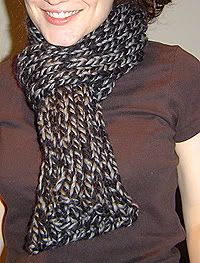 The last time there was a new scarf trend, it was the "Mette Marit look", named after my country's crown princess. Amazingly, she tied scarves around her neck, like in the picture on the right. Unbelievable. Despite the fact that people have been keeping their necks warm in this very way since the beginning of time, it was renamed after her. Children of anti-monarchy parents were no longer allowed to wear their scarves in this way. Seriously, they were told to go back and refashion their Palestina scarves before leaving the house.
The last time there was a new scarf trend, it was the "Mette Marit look", named after my country's crown princess. Amazingly, she tied scarves around her neck, like in the picture on the right. Unbelievable. Despite the fact that people have been keeping their necks warm in this very way since the beginning of time, it was renamed after her. Children of anti-monarchy parents were no longer allowed to wear their scarves in this way. Seriously, they were told to go back and refashion their Palestina scarves before leaving the house.
So, just for the record, I would like to have stated, publicly, exactly which political statements I am making when I wrap my pashminas around my neck. I do not support the blond in the picture (I think she could be anyone basically.) And I have not just bought a gray scarf because I read in a press release that scarves should be "greige, foie gras or slate". I wear my pashminas as a protest against sore throat. And to show my support of color coordination.
Update, April 27th 2008: I am setting fashion trends again, along with every other normal person. Nice to know that I am super-fashionable without even trying.
Posted by Julie at 7:50 PM | TrackBack
August 9, 2007
Yet another reason not to like the current American president.
(What a good post... shoes and politics at once! If only it were good shoes combined with good politics... )
Posted by Julie at 1:00 AM | TrackBack
July 23, 2007
A message...
... to my sisters, mother and mother's friends who provide me with all sorts of "friendly advice" every single summer, such as "There is such a thing as self-tanner." and "With that skin, you could just go goth.":
I don't build tans, I build head-aches when I'm in the sun. And apparently, I don't need to spend precious hours lying in the sun doing nothing, wearing an uncomfortable, unflattering sorry excuse for an "outfit". I need to get myself some fishnets - using some of the money I earn working indoors - and see if I can turn my white legs to my advantage.
Sorry, everyone. The next post will be less fashion and more politics/academics/geekiness/stuff. Promise.
Update September 16th 2007: Not only did I get fishnets for myself for my birthday (not as fishnetty as the ones in the picture) but someone agrees with me.
Posted by Julie at 11:11 PM | TrackBack
July 18, 2007
How to travel Part 2: What to wear
I work at a museum and spend much of my time talking to tourists. And although I love my job, everything becomes routine after a while. So the part of my brain that isn't answering their questions or politely asking them to stop smoking while leaning against an 800-year-old wooden building, is usually judging their fashion sense. Now I know I can appear to be high-maintenance, and I don't insist that everyone at the museum wear heels and skirts just because I feel like it. After all, there are cobble-stones, steep mountain paths and often rain to deal with. But Crocs? With socks? Is that really necessary, or even practical? If the point of Crocs is that they are sandals that can get wet, then doesn't wearing them with socks ruin their (dare I even say it) one possible good side?
It seems that bad taste is mandatory for tourists, just like it is for Norwegians going to their cottages in the mountains. Too many adults seem to stick to the childish idea that clothes are divided into comfortable, practical play-clothes and stiff, itchy “dressing up” clothes. It apparently hasn't entered their minds that a t-shirt can be soft and have a flattering color and that shoes can be good for your feet without being Crocs. On one randomly chosen day, I saw 14 fanny packs, 20 people with socks in their sandals, 6 weird hats, 8 pairs of Crocs (at least two of them with socks), 5 pairs of tourist vests, 23 pairs of tourist shorts, 19 pairs of tourist pants, and 8 pairs of tourist pants with removable legs so that they can be turned into tourist shorts. To be fair, I counted 11 pairs of ok shoes, and 7 pairs of gold-colored shoes, which you would not expect in the average tourist's suitcase.
This strange tourist style makes me wonder about two things: Firstly, what are these people carrying around? They have twenty pockets on each item of their clothing, plus fanny packs and backpacks. But they don't have food or water (they always ask me where they can buy that), their sunglasses and cameras are carried on strings around their necks, and their sweaters are around their waists. So if the average tourist is carrying a map, a wallet and a cell phone, what is in all the other pockets? I haven't yet worked up the nerve to ask them.
The second mystery is this: why do the same people over-dress for flying and then under-dress once they've landed? OK, so I can't prove it's the same people, but when I see so many stilettos in economy class check-in lines and so many Birkenstocks with stockings at tourist attractions, surely there must be some overlap? One semi-logical explanation I can think of is that people with bad shoe taste want to bring their Crocs and their wedge boots (both in one closet; shudder) and the wedges are the heaviest.
Another possibility is that these people have seen some ca. 1950's airline ad (or for that matter, the 2000's in-flight commercials for IcelandAir) and have gotten the impression that long-distance flying is glamorous. Well, forget that. Your feet will swell, your eyes will itch, your food will taste bad, you'll freeze and then overheat and your mascara will fall off. The flight attendants may be wearing pencil skirts, heels and eye-liner, but they are not like other people. (Incidentally, now that I know how to fasten my seatbelt and adjust my own oxygen thing before helping a child, how about the flight attendants tell me how to apply make-up so that it stays in place for 12 hours of high-altitude dehydrated hell?) Flight attendants wear uniforms, and uniforms have certain distinguishing features: they are uncomfortable, they are traditional, and they are not what everyone else is wearing. So wear flats and pants. Not a mini-skirt that doesn't allow to sit down (you'll have to do that for take-off and landing, you see). Not something that needs to be ironed when you change flights. And if you must wear shoes with soles that could contain anything from knitting needles1 to samurai swords, at least make sure they're slip-ons so you can make it through security check in less than 20 minutes.
In fact, long-distance flying is one of the very few occasions when even my inner Prada-wearing devil can “OK” track pants and flip-flops in public. I recommend pyjama bottoms if you have the guts. Wear socks in your sandals for all I care. In fact, that can be good: you slip off your sandals in the air, but you're still warm; then when you and your swollen feet land, there's room for your toes.
There's an added benefit to dressing slouchy in the air: it shows you're high-class, at least according to Paul Fussell's very funny book about the American class system. People dress up for special occasions. Dressing way down shows that flying is something you do a lot, that you're completely comfortable with it (Fussell writes that walking around the aircraft barefoot promotes you to upper class) and that frankly, you have better places to wear your stilettos. Might I suggest The Norwegian Folk Museum?
1Airlines confiscate knitting needles and then hand out knives and forks. Makes perfect sense, right?
Posted by Julie at 12:07 AM | Comments (1) | TrackBack
September 10, 2006
For innbitte quiltere
Ville bare påpeke at mamma har en ny webside (i tillegg til en blogg hun har hatt en stund).
Det jeg synes er artig med denne websiden er at den ikke legger skjul på hva den er: en side for quiltenerder. For alle har (eller bør ha) noe de er litt nerder om. (For meg gir dette utslag i voldsom spenning når jeg opplever dette.) Og denne siden er ganske selvironisk. Jeg husker jeg satt utenfor en håndarbeidsmesse sammen med pappa. Vi satt trygt inne i bilen slik at vi kunne kommentere alle håndarbeidsdamene som gikk forbi. De fulgte en av to klesstiler:
- formingslærerstilen kjennetegnet av flagrende udefinerbare (Er det en kjole? Er det en genser? Er det et sjal? Hvem vet?) klesplagg, helst i så mange forskjellige farger og tekstiler som mulig.
- lav-selvtillit-stilen kjennetegnet av klær i ulike nyanser av grått, som er bittelitt for store. Siden man er håndarbeidsdame, må man også ha på seg noe man har laget selv, og dette er ofte nærmere formingslærerstilen, noe som gir ekstra lav selvtillit den dagen. (Merkelig, for en viss selvtillit må man ha hvis man skal gå med noe man har laget selv.)
Det er med andre ord lett å gjøre narr av nerder. Og da er det viktig at nerder innenfor alle felt har en god porsjon selvironi. Dette synes jeg siden "Bare må ha det" er et godt eksempel på.
Posted by Julie at 5:27 PM | TrackBack
August 7, 2006
I'm a Fashionista!
Well, this is a poor excuse for an actual post, but it didn't involve a lot of typing...| Fashionista 37% Flamboyance, 60% Originality, 62% Deliberateness, 47% Sexiness |
| [Tasteful Original Deliberate Prissy] One is certain: you have great taste and plenty of ideas. You have clearly defined beliefs about what's good and what's bad in fashion but they are far from banal. Stylish and imaginative, you prefer to inspire admiration than to shock and you mostly succeed. Even if sometimes you'd like to have more courage to put on something absolutely outrageous you do great job in creating a unique look that others look up to. There is a possibility that you work in the fashion industry. If you don't, perhaps you should. The opposite style from yours is Bar Cruiser [Flamboyant Conventional Random Sexy]. All the categories: Librarian Sporty Hottie Office Master Uptown Girl/ Boy Brainy Student Movie Star Fashionista Glamorous Soul Fashion Enemy Bar Cruiser Kid Next Door Sex Bomb Hippie Kid Fashion Rebel Fashion Artist Catwalk God(ess) |
 |
| Link: The Fashion Style Test written by mari-e on OkCupid Free Online Dating, home of the 32-Type Dating Test |
Posted by Julie at 11:36 AM | TrackBack
May 26, 2006
Kjøpelyst
Mens vi venter på at jeg skal få flyttet og komme meg såpass i orden at jeg kan ha noe interessant å blogge om, legger jeg ut noe jeg skrev for lenge siden. Da min (mannlige) norsklærer leste denne, ble han helt fascinert og svært takknemlig for innføringen i hvordan jenter tenker når de shopper. Nå kan det være jeg er sær og at andre jenter tenker mer normalt; det skal jeg ikke utelukke.
Min manglende evne til å kjøpe noe som helst var en gang så stor at en av mine kunstneriske venninner brukte det som tema i en tegneserie. Stripen viste en bekymret Julie som holdt en heftig debatt med seg selv om kjøp av én hårstrikk.

Etter nøye opplæring, har jeg blitt en proff klesshopper. Jeg ankommer butikken, og i løpet av få sekunder har jeg sett om det er mulig å finne noe verdifullt der. På denne tiden har jeg også funnet ut om musikken tåler å bli hørt på i mer enn tre sekunder, og hva slags andre kunder som handler i denne butikken. Er jeg fornøyd med alt dette, begynner jeg en grundig gjennomgang av hyller og stativer. Stort sett er jeg ute etter ett bestemt klesplagg, og eventuelt andre funn skal være svært så spesielle hvis jeg skal vurdere dem seriøst. La oss si jeg finner en genser. Visse modeller vil aldri bli vurdert, for eksempel de med ribbestrikk som dekker nederste del av magen, men ikke resten av genseren. Hva er poenget med det? Finner jeg en genser som ser fin ut, leter jeg etter den lille lappen i siden som forteller hva den er laget av. Akrylgensere forkastes. Ullgensere er jeg i tvil om og holder dem inntil halsen eller innsiden av armen for å sjekke om de klør. Rene bomullsgensere er en behagelig sjeldenhet, men de kan krympe. Og så videre. Etter en mental gjennomgåelse av klesskapet hjemme, velger jeg én eller to farger som kan fungere, finner riktig størrelse og går videre. Hele prosessen gjentar seg ved neste interessante klesplagg. En kort stund senere er jeg i prøverommet. Plaggene som ikke passer blir sortert fra de som gjør det. Mental gjennomgåelse av klesskap gjentas, og prisene sammenlignes med plaggenes anvendelighet og antatte kvalitet. Ti minutter etter at jeg gikk inn i butikken, forlater jeg den uten et eneste plagg.
Det er billig å handle på denne måten. Merkelig nok spiller det ingen rolle at jeg ikke skaffer meg nye klær. Klesshopping handler om så mye mer enn bare å fylle skapet. Vi kan se på kjøpesenteret som et galleri. Det er fullt mulig å kjøpe kunstverkene, men man kan godt bare oppleve dem. Å ha en interesse for klær, sko og tilbehør betyr at man er egoistisk, jålete og sannsynligvis mindre intelligent, men det lever jeg med.
Gaveinnkjøp er annerledes. Tross alt må jeg gi en gave til de jeg hadde tenkt å gi en gave til, jeg kan ikke bare droppe det. Dessuten er det lettere å bruke penger på andre enn meg selv. Ja, nå har jeg sagt det også, for det virker ganske rart. I denne egoistiske, kyniske verdenen hvor undertøysreklamene til H&M er et sikrere juletegn enn den gode, gamle julestemningen[1], er det fremdeles sant at jeg liker å gi gaver. Det er nesten morsommere enn å få. Ja, bare nesten, la oss ikke bli for prektige. Når jeg får gaver, blir jeg minnet på hvor bortskjemt jeg egentlig er, og hvor mye jeg egentlig har, så mye at jeg ikke har plass til mer, så jeg må ønske meg et lite ekstrahus hvor jeg kan sette alle mine pyntegjenstander, klær og bøker.
Kanskje det er derfor jeg sjelden kjøper noe. Fordi jeg innerst inne forstår at jeg har altfor mye. Og når jeg får beskjed om å fortelle noen hva jeg ønsker meg og slutte å være så vanskelig, svarer jeg: ”Jeg trenger egentlig ingenting. Unnskyld.”
Så ser jeg noen med en fin bukse og synes jeg godt kan kjøpe en sånn en, eller jeg ser en film som foregår på 1700-tallet og ønsker desperat at noen av klærne mine ga en følelse av den stilen. Så jeg vender tilbake til kjøpesenteret for å få en dose av den sløvende bakgrunnsmusikken og følelsen av ulike tekstiler mot huden. Men innerst inne håper jeg at jeg ikke finner noe jeg liker.
Gutter forstår ikke jentenes shoppebehov, og jeg kan ikke klandre dem for det. For jeg forstår det ikke selv.
[1] Og nå er ikke det sikkert heller, for H&M har visst sluttet med disse reklamene så vidt jeg har skjønt.
Posted by Julie at 10:15 AM | Comments (1) | TrackBack
September 19, 2005
Lansering av nytt begrep: pastellstilen
Dette skulle opprinnelig være del 2 av forrige innlegg som da het "Om ungdomsmoter, hyttemoter og litt om ord". Dette er altså delen som handler om ungdomsmoter.
Pastell
Det er ikke ofte jeg diskuterer mote med faren min. For et år siden oppsummerte han ungdomsstil etter noe jeg tror er åttitallets standard (?): Det finnes sosser og det finnes freakere. På denne skalaen er jeg nærmere freak og lillesøsteren min nærmere soss. Så enkelt kan det sies, og da var det egentlig ikke nødvendig å diskutere mer med ham om saken.
Nå har imidlertid begge begrepene blitt ganske utvannet, og verken sosser eller freakere vil oppfattes som sosser og freakere lenger fordi de alltid vil kunne komme med sin egen definisjon som ikke passer på dem selv. Folk liker ikke å bli satt i bås, og en effektiv måte å unngå dette på, er å klusse med begreper til du alltid kan si: "Ikke kall meg det, for det betyr ikke det du tror det betyr." Jeg lanserer derfor et nytt begrep: pastell.
Man trenger ikke gå utelukkende med pastellfarger for å være pastell, men hvis hver farge har en identitet, vil pastellmenneskene som gruppe ha identiteten til pastellfargene. Hvorfor:
- De skiller seg ikke fra hverandre, selv om de ikke er identiske. Jeg kan se at babyblått og lysegult er to forskjellige farger, men det er egentlig ganske likegyldig for meg hva som er hva. Jeg kan se at to pastelljenter ikke er likt kledd, men jeg greier likevel ikke å definere forskjellene mellom klesstilene deres, og jeg tror ikke de selv kunne gjort det heller. Jeg var på en fest for et par uker siden. Det var bare en liten sammenkomst egentlig, men den ble plutselig invadert av en gjeng pastell. De var overalt, og jeg kunne nesten ikke se forskjell på dem. De håndhilset på meg og presenterte seg klart og tydelig, men jeg følte at de ble som et eneste virvar av rene farger og fønet, bleket hår. Jeg var på nippet til å si til flere: "Jeg tror jeg har møtt deg før. Nei, beklager, du hadde bare samme øyensminke som en jeg kjenner." Enten de innrømmer det eller ikke, pastellungdom vil ikke være individualister.
- De er provoserende uprovoserende. I fargenes verden er sort, rødt og knallgult irritert over pastellfargenes mangel på ekstremhet. Lysegult, rosa, babyblått og "seafoam green" er så lite skjærende at det er slitsomt. Pastellungdommen mangler det forsøket på opprør som alle andre lignende ungdomsgrupper har. Foreldrene liker klesstilen deres; de er pene på håret og sminken er perfekt; jentene har ikke dype utringninger eller sotete øyne; guttene har rene sko og stryker skjortene sine. De gjør ingen forsøk på å motstå kommersialisme eller bli vegetarianere eller være deprimerte, misforståtte kunstnere eller høre på alternativ musikk. På en måte kan de kalles befriende kyniske og ærlige, og jeg kunne kanskje sympatisert hvis det var et opprør mot opprør (for hva er egentlig ungdomsopprør?). Men jeg vet at det er fordi de ikke gidder.
- De er vanskelige å definere. Pastellfarger er lyse, men beige og kremhvitt er ikke pastellfarger. Vi vet alle hva pastellfarger er, men hvorfor? På samme måte blir det med pastellmenneskene: jeg kan definere en enkeltperson eller en enkeltgjeng som pastell, og overraskende mange vil forstå hva jeg mener uten at jeg har forklart på forhånd hva jeg legger i ordet, men jeg tør ikke begi meg ut på en definisjon akkurat her og nå. I motsetning til med pastellfargene, er det også slik at det vil variere hva vi oppfatter som pastellungdom etter hva som er moteriktig klesstil, musikk, drikkevarer osv. Pastellungdom følger mote på en begrenset måte. Regelen om å ikke provosere gjelder, og de velger gjerne lyse farger fremfor mørke - ikke bare på klær, men på kaffe (kaffe latte fremfor svart kaffe), alkohol (Smirnoff Ice fremfor øl), hår (blondt fremfor sort) med mer.
For å komme tilbake til begynnelsen: pastell er mer soss enn freak, men det er to vesentlige forskjeller. Det viktigste er rent teoretisk: pastell er et nytt begrep, min definisjon gjelder, og min pastellsøster har (foreløpig) ingenting i mot å bli kalt pastell. Vi trenger nye begreper etterhvert som de gamle mister sin opprinnelige betydning. Den andre forskjellen er økonomisk: sosser er rike og bruker mye penger på seg selv (soss kommer vel av sosietet eller noe sånt?). Sossestilen er dyr å opprettholde fordi en av de vesentligste elementene er merker, så dyre og prangende som mulig. Pastellmennesker kan godt kjøpe dyre ting, men de trenger ikke. Et pastellplagg kan like godt være kjøpt på Hennes som på Tatler. En tenåring kan godt bruke forskekkende mye penger på seg selv uten å være pastell, og det at flere og flere unge er klar over at liksom-Chanel-briller kan kjøpes for en tier i utlandet, vanner ut designermerkenes status. Det er lenge siden man virkelig kunne anslå folks konto utfra klærne, uten å sjekke prislappene.
Hvis du nå forstår hva pastell betyr, bruk begrepet! Hvis ikke, skriv gjerne kommentar med spørsmål. Jeg tror ikke jeg kan definere dette presist, men hvis du viser eksempler, kan jeg bedømme om de er pastell eller ikke, så kanskje du etterhvert vil se et mønster selv.
Posted by Julie at 11:33 PM | Comments (4) | TrackBack
September 5, 2005
Om hyttemoter og litt om ord
I løpet av de siste fire månedene, har jeg vært på tre hytteturer. Totalt ukarakteristisk for meg. Jeg har dessuten misforstått hele hyttekonseptet, for i hvert av tilfellene dro jeg på hyttetur av motsatt grunn som den grunnen de fleste oppsøker hyttelivet for: jeg ville treffe mennesker og være sosial. Tidligere dro jeg på hytte som en ekte nordmann: for å være alene og drømme meg bort til en enklere tid da det ikke var behov for elektrisitet, sjampo eller andre mennesker. Min far undrer seg sikkert over hvor hyttefantasten ble av, og hvorfor hun er blitt erstattet av en blek jente som vet masse om kaffe, men lite om langrenn, og som er avhengig av både balsam og privatliv. Jeg mener fortsatt at en hytte med dusj ikke er en hytte og fjell med trær på ikke er ekte fjell, men alt dette er blitt redusert til teori, og i praksis kan jeg ikke lenger forstå at man skal måtte sitte i en fullstappet bil i fem timer for å samle tankene og dyrke ensomheten. Ensomhetsdyrking er langt enklere i en passelig stor café der alle menneskene er blitt enige om å la hverandre være i fred, enn i et lite hus der alle menneskene skal KOSE seg SAMMEN. Dessuten lukter det bedre i caféen.
Det jeg egentlig skulle snakke om, er mote, stil, image og litt om ord. Det er nemlig et særtrekk ved hytter, at man later som om man ikke er forfengelig når man drar til dem, men denne benektelsen av forfengelighet skjuler det faktum at det er en helt egen stil som gjelder på hyttetur. En hver fravikelse av denne stilen vil stemple deg, ikke som stilløs eller umoteriktig, men jålete og stresset. Man må altså følge en bestemt stil for å overbevise andre om at man ikke er opptatt av å ha en bestemt stil.
Kjennetegn ved "jeg-bryr-meg-da-ikke-om-stil-stilen"
Nickers
Gummistøvler
Gigantisk ryggsekk
Idrettstøy, evt. tur-i-skog-og-mark tøy
Fellestrekket ved disse er at de er stygge, og bare brukes i helt bestemte situasjoner. Man må altså kjøpe dem kun for dette bruk. Jeg vil påstå at jo mindre man bryr seg om stil og image, jo mindre penger vil man søke å bruke på stil og image. Et hvert plagg eller tilbehør med begrenset bruksområde, vil bli nedprioritert til fordel for flerbruksløsninger for å minimere antall innkjøp.
Noen vil kanskje påstå at disse tingene som jeg lister over, er flerbruksting, siden de like godt kan brukes i byen som i skogen. Til det vil jeg si at ikke bare fungerer disse tingene dårlig i byen, de fungerer nesten ikke i skogen heller. Eksempler:
1. Nickers. Kan du se noe poeng i å gå med en kortere bukse fordi det er kaldt, altså å kle på seg mindre i kaldt vær?
2. Gummistøvler. Hvorfor velge glatte, kalde sko i regnvær når man kan impregnere vanlige joggesko?
3. Gigantisk ryggsekk. Akkurat dette er praktisk når store, tunge bører skal bæres i skog og mark og ENSOMHET, men har du prøvd gigantisk ryggsekk på t-banen eller i en klesbutikk? Ikke bare er det lett å velte ting og mennesker, man tar enorm plass og nærmest tigger lommetyver om å forsyne seg.
4. Idrettstøy. Hovedfunksjonen til slike, må være at de ikke hindrer kroppens naturlige bevegelse. Så lenge klær tilfredsstiller dette kravet, bør de være greie treningsklær. Men nei da, de skal i tillegg være kjøpt i en sportsbutikk. En stor og uformelig bomullsbukse fra H&M er ikke like egnet som en stor og uformelig bomullsbukse fra Nike. Og det er viktig å skille mellom den store og uformelige bomullsbuksen man bruker til yoga, den man bruker foran tven, den man bruker på treningssenter, den man bruker på hyttetur og den man bruker på gåtur som en del av hyttetur. Forstå det den som kan.
Det kan være jeg har gått glipp av viktig lærdom og innsikt, og enhver som forstår seg på hyttestilen, må gjerne forklare den for meg. I mellomtiden vil jeg sende ros til de av menneskene jeg var på Studenterhytte med som ikke hadde eksempelvis gigantisk sekk siden de nettopp hadde flyttet hjemmefra og ikke hadde prioritert å ha slike ting med begrenset bruksområde med seg inn på en ny og liten hybel. Med bysko, byjakker og bybager er det dere som er de virkelig ujålete hyttemenneskene. La meg også få med at sekken jeg hadde på ryggen, var lånt av mamma. Jeg eier ikke slikt.
Posted by Julie at 9:59 PM | Comments (6) | TrackBack

